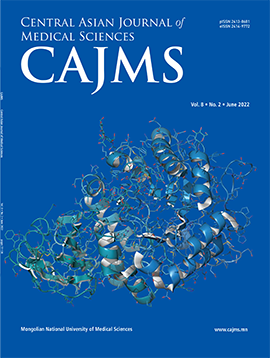Preliminary Study Results of Native Mongolian Inonotus Obliquus Extracts in Alloxan-Induced Diabetic Rats
DOI:
https://doi.org/10.24079/cajms.2020.12.007Keywords:
Inonotus obliquus, Diabetes, Alloxan, Langerhans Islet, Traditional MedicineAbstract
Objectives: We aimed to investigate the morphological changes and clinical chemistry panel of alloxan-induced diabetic rats for the treatment groups of ethanol or aqueous extracts of Mongolian natural Inonotus obliquus. Methods: Wistar albino rats (n = 80) were randomly assigned into four groups: 1. Healthy control group, 2. Untreated diabetic group, 3. Diabetic group treated with Inonotus obliquus (500 mg/kg per day) water extract, 4. Diabetic group with Inonotus obliquus (500 mg/kg per day) ethanol extract. Diabetes was induced by alloxan 150 mg/kg (single intraperitoneal injection) in the diabetic groups. Results: Both water and ethanol extract of Inonotus obliquus reduced the blood glucose level of diabetes at 48 h after treatment. Histologic and morphology examinations showed that water extracts of Inonotus obliquus alleviated the damage to pancreas tissues in alloxan diabetic rats. Conclusions: We postulate that simple ethanol and water extracts of natural Mongolian Inonotus obliquus have an antihyperglycemic effect that enhances islet cell function in alloxan-induced diabetic rats. The extracts of Mongolian natural Inonotus obliquus are easily producible at low cost and should be further explored as a treatment for diabetes.
Downloads
242
Downloads
Published
How to Cite
Issue
Section
License
Copyright (c) 2020 Mongolian National University of Medical Sciences

This work is licensed under a Creative Commons Attribution-NonCommercial 4.0 International License.




